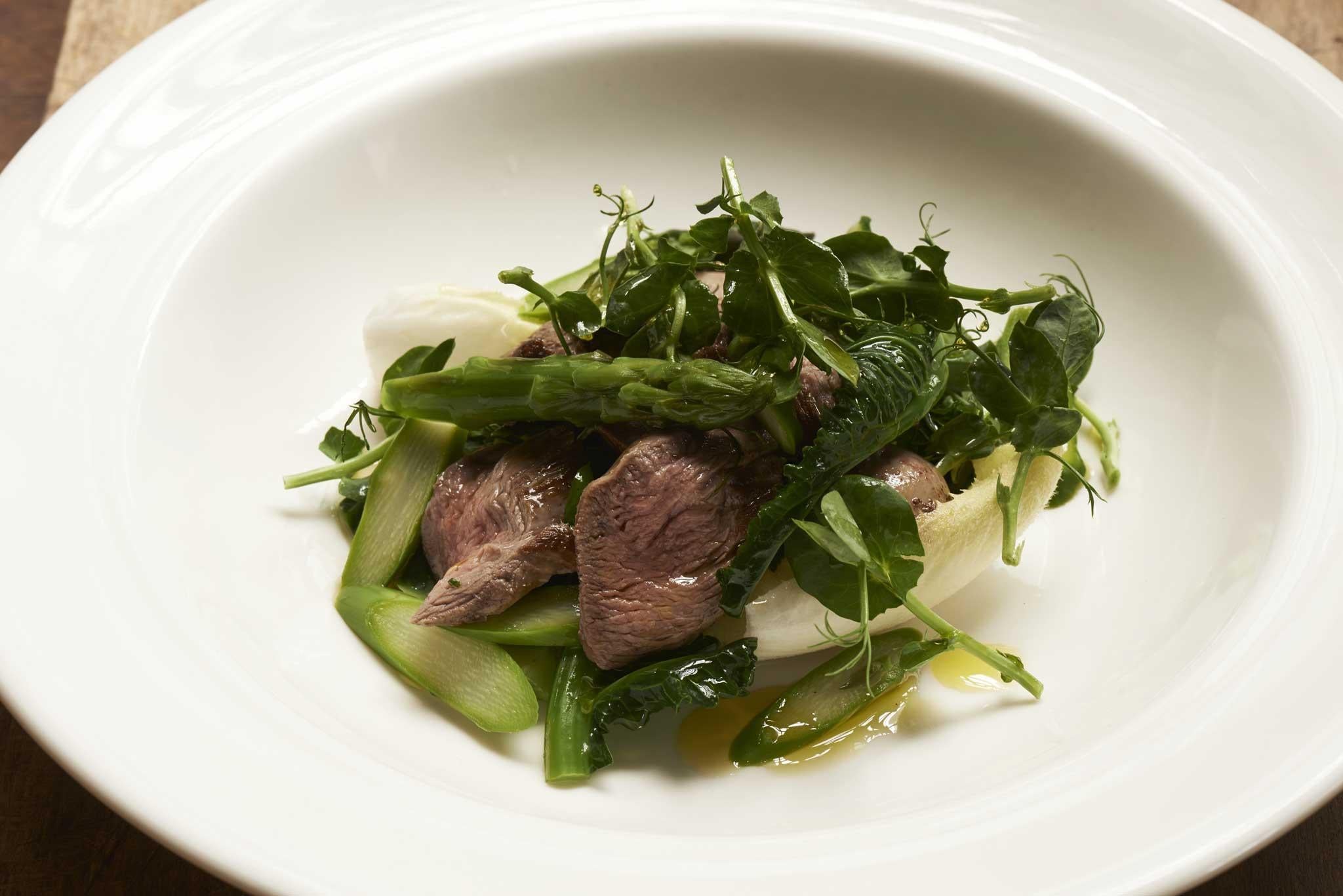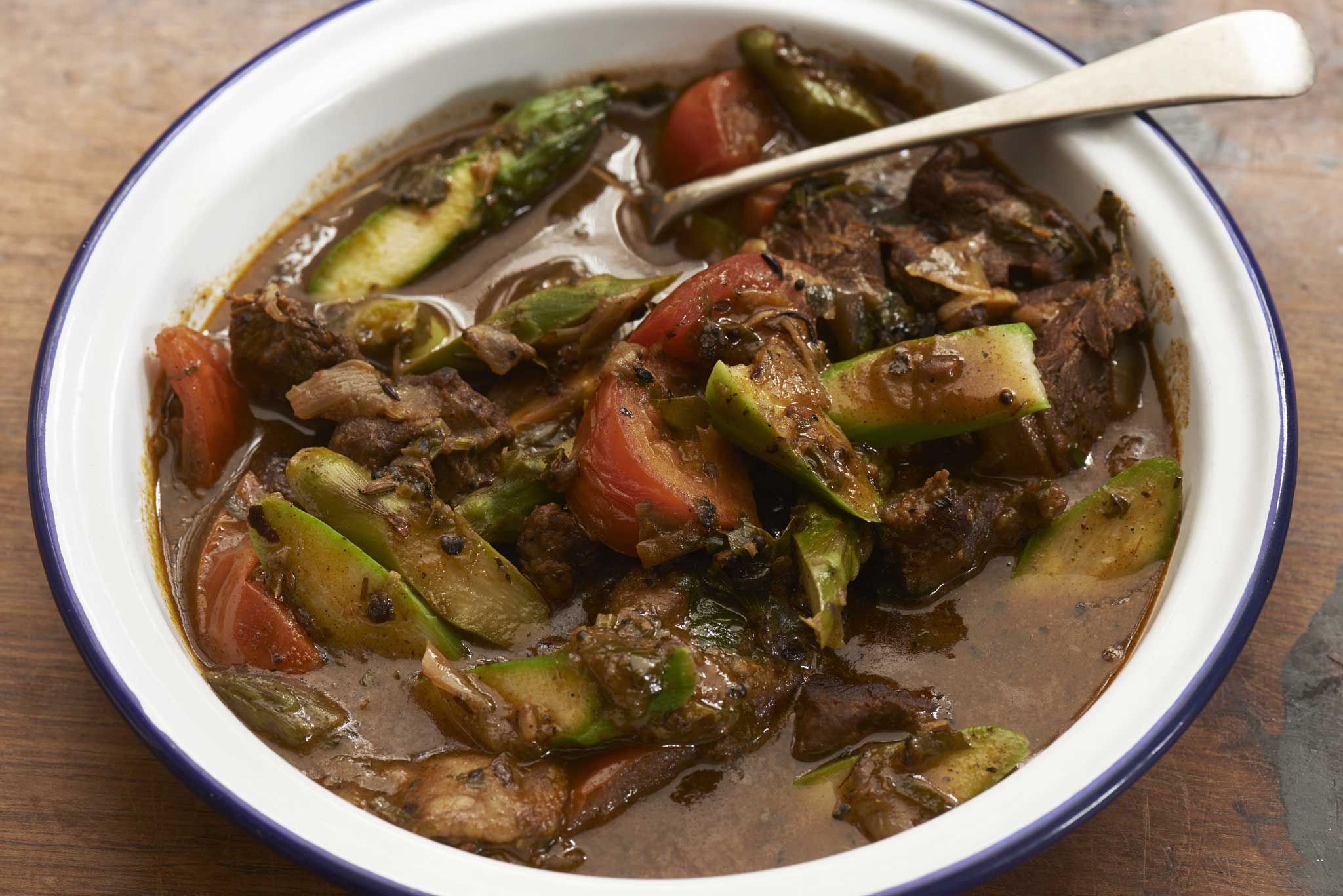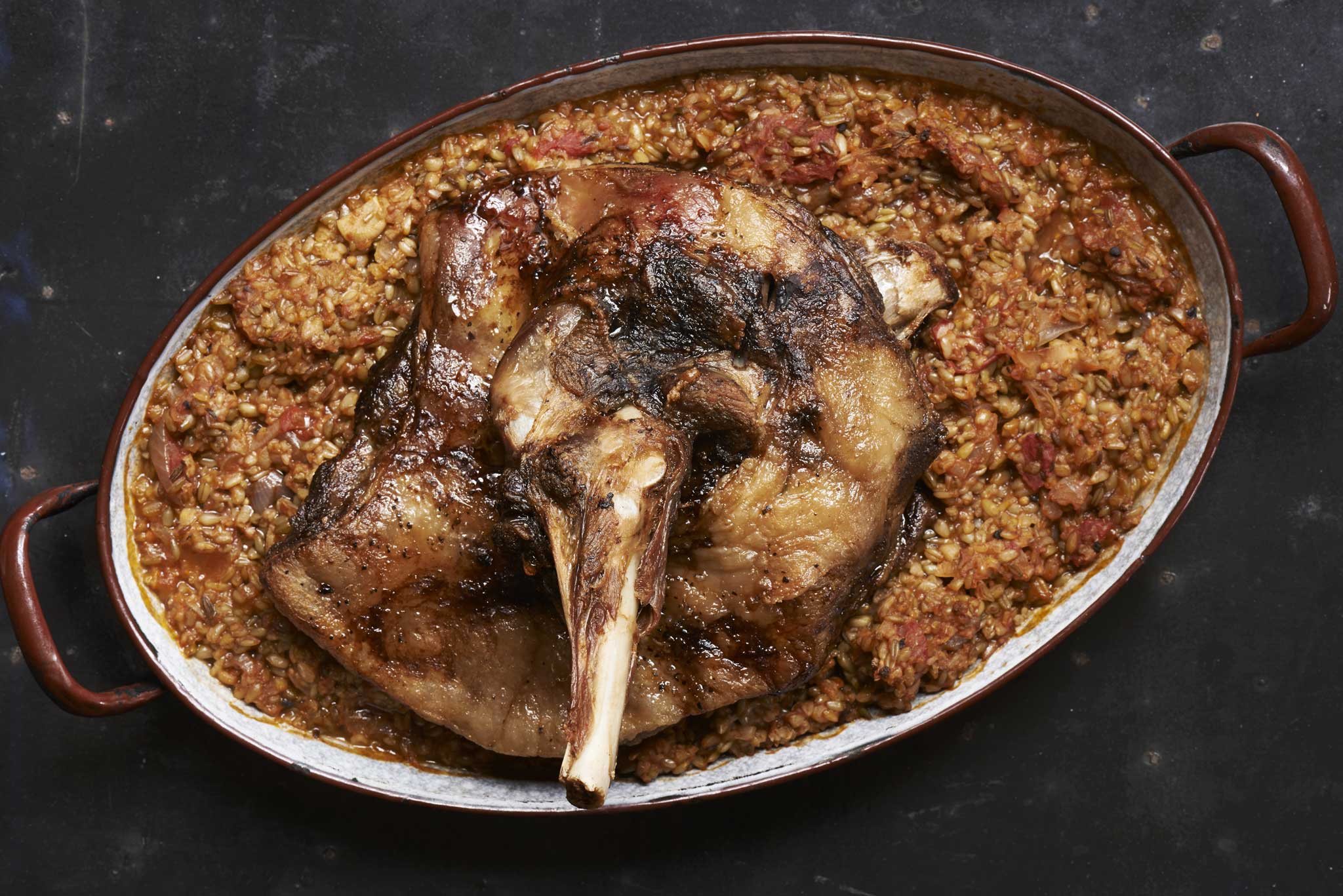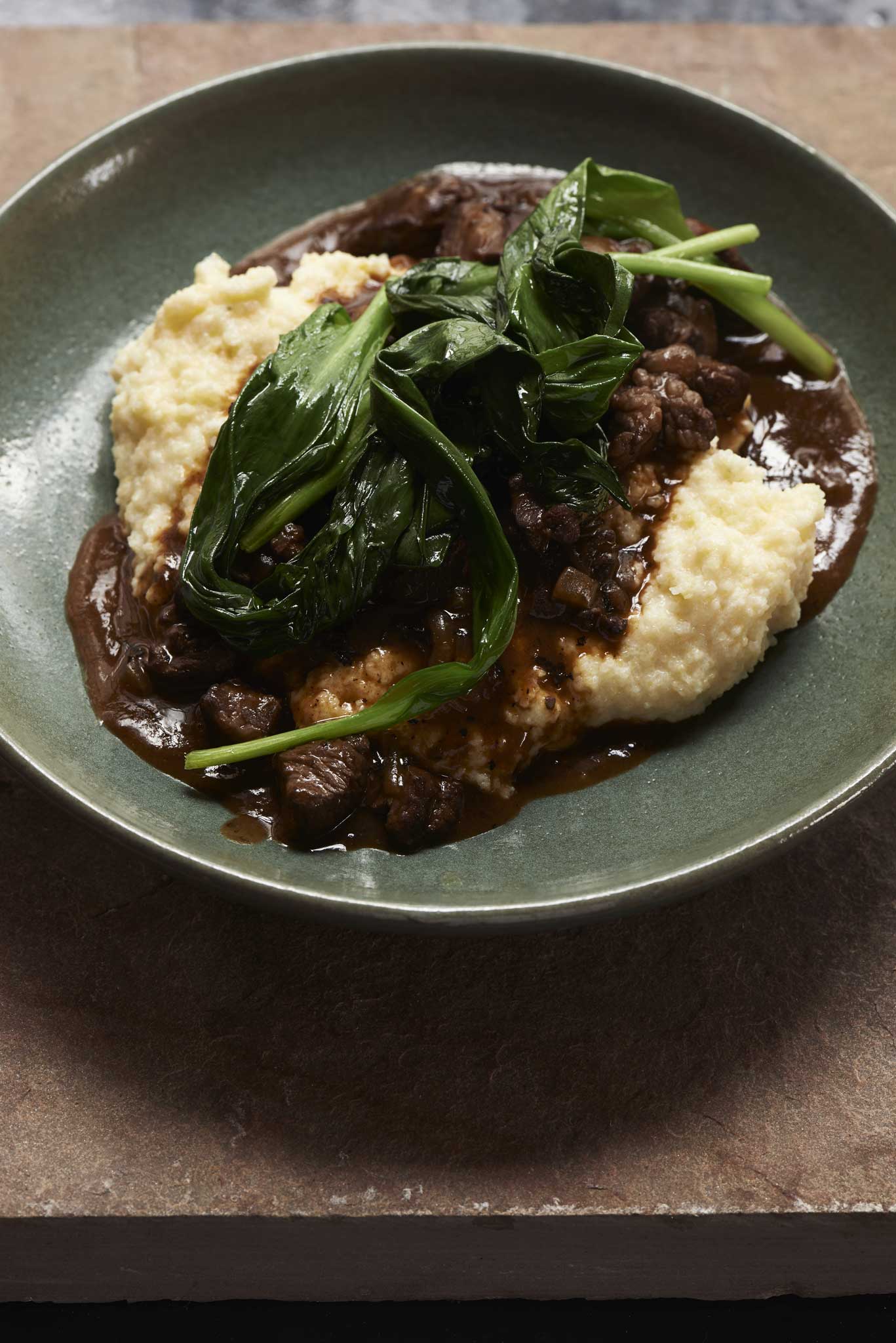Mark Hix recipes: Our chef presents four of his finest lamb dishes for Easter
Why use the usual cuts of the springtime meat, when leg or shoulder yield much better results – and are flexible enough to work in roasts, ragout, curry and salad?

I was recently sent some cuts of Lavinton Lamb by Sophie Arlott from Lenton, Lincolnshire. Her lambs are traditional British breeds, predominantly Southdown and Hebridean, and are well worth trying if you can get them.
The meat she sent over reminded me how we often overlook the flexibility of lamb. Most of us tend to buy simple cuts which are easy to cook, but larger cuts, such as leg and shoulders, are often more rewarding; especially if you slice them down into the individual muscles, which are tender and need slow cooking.
Lamb and asparagus salad
If you don’t like offal, just use more fillet here instead of kidneys.
Serves 4
4 lamb under fillets
2 lamb kidneys
4-6 asparagus spears, cooked and sliced
60-80g small salad leaves
Salt and freshly ground black pepper
Vegetable oil for frying
1tbsp good-quality cider vinegar
2tsp Tewkesbury or Dijon mustard
4tbsp rapeseed oil
Season the lamb kidney and fillets. Heat a little vegetable oil in a heavy frying or griddle pan, until it is almost smoking, and cook the kidneys for about 3-4 minutes on each side and the fillets for about a minute each side, ensuring both remain pink.
Now transfer to a plate to catch any juices.
Whisk the vinegar, mustard and oil with the lamb juices to make a dressing, and season.
Mix the salad leaves and asparagus in a bowl and toss with half of the dressing, then arrange on four plates.
Slice the lamb fillet and kidney thinly and place the slices on top of the salad and spoon over a little more dressing.

Lamb, tomato and asparagus curry
Although their textures are completely different, when it comes to flavour, I often think asparagus is quite similar to okra – so, to my mind, it is not too much of a leap to use asparagus in a curry.
Serves 4
600g neck or shoulder of lamb, cut into 2cm chunks
4tbsp vegetable or corn oil, or ghee
2tsp fenugreek seeds
1tsp fennel seeds
1tbsp fenugreek leaves
1tsp cumin seeds
½tsp caraway seeds
1tsp nigella seeds
1tsp turmeric
1tsp mustard seeds
The black seeds from 10 cardamom pods
2tsp ground cumin
2 medium red onions, peeled and finely chopped
3 medium cloves of garlic, peeled and crushed
A small piece of root ginger, scraped and finely grated
A good pinch of saffron
½tbsp tomato purée
500ml beef or chicken stock
A handful of curry leaves
4-5 tomatoes, roughly chopped
8-10 asparagus spears, cooked
Salt and freshly ground black pepper
A handful of coriander, roughly chopped, and some more leaves of your choice to garnish
Heat 3 tablespoons of the vegetable oil in a heavy-based saucepan, add the dry curry spices, and cook on a low heat for a minute or so, stirring as the spices cook. Add the onion, garlic, ginger, saffron and curry leaves and continue cooking on a low heat for 3-4 minutes, with a lid on, until soft. Add the tomato purée and stir well, then add the stock, bring to the boil, and simmer for 20 minutes. Meanwhile, heat a little more vegetable oil in a frying pan, season the lamb and fry on a high heat for a few minutes until nicely browned.
Blend one-third of the sauce in a liquidiser, until smooth, then return to the pan with the lamb and simmer for about an hour or until the meat is tender.
Add the tomatoes and simmer for another 10 minutes, then slice the asparagus thickly on the angle and add to the curry with the coriander. Simmer for a few minutes, then season to taste, if necessary, and serve with basmati rice.

Slow-roast lamb shoulder with spiced freekeh
Freekeh, which is basically green wheat that has been lightly toasted, may not be available in your local supermarket, but it is definitely worth going the extra mile to find it. Think of it like spelt, but more versatile.
Serves 6-8
1 shoulder of lamb, on the bone
A little vegetable oil for frying
4 cloves of garlic, peeled and halved
A few sprigs of rosemary
For the freekeh
2tbsp rapeseed or olive oil
2 medium onions, peeled, halved and finely chopped
4 cloves of garlic, peeled and crushed
2tsp cumin seeds
2tsp black mustard seeds
2tsp fenugreek seeds
1tsp dried chilli flakes
The seeds from 12 cardamom pods
200g freekeh, soaked in cold water for 2 hours
1tbsp tomato purée
1x350g can of chopped tomatoes
1.5ltrs hot chicken stock
Salt and freshly ground black pepper
Preheat the oven to 160C/gas mark 3. Make some incisions in the shoulder with the point of a knife and insert the garlic and rosemary. Season the shoulder, heat the oil in a frying pan and lightly colour the lamb on all sides and then place in a roasting tray. Cook for about 4 hours, basting as it is cooking.
Meanwhile, gently cook the onions and all of the spices in the butter in a heavy-based saucepan for 3-4 minutes, until soft. Add the tomato purée and tomatoes and stir in 1ltr of the stock. Season and simmer gently for about 20 minutes, stirring every so often. Check the freekeh; it needs to still have a bit of bite, so add more stock if necessary and continue cooking until the liquid is absorbed and it is a sloppy, risotto-like consistency.
To serve, transfer the freekeh into an ovenproof serving dish. Place the lamb on top and return to the oven until required. Serve by cutting chunks off the shoulder.

Lamb ragout with wild garlic and creamed polenta
This is a great way to use neck of lamb fillet or any trimmings from the leg or shoulder you have. If you don’t like polenta, you can use parmesan mash.
Serves 4
For the lamb ragout
500g neck of lamb, cut into 1cm cubes
1 large onion, peeled, halved, finely chopped
4 cloves of garlic, peeled and crushed
2 sticks of celery, cut into ½cm dice
A few tbsp of vegetable oil for frying
1tbsp plain flour
1tbsp tomato purée
1tsp chopped thyme or oregano leaves
100ml red wine
750ml hot beef stock
To serve
A handful of wild garlic leaves, washed
Heat the vegetable oil in a large, heavy frying pan. Season the lamb and fry in a couple of batches on a high heat for 3-4 minutes, until nicely coloured; then transfer to a plate or dish.
Meanwhile, gently cook the onion and garlic in a tablespoon of the vegetable oil for 3-4 minutes, without colouring, then stir in the flour and cook on a low heat for a minute. Stir in the tomato purée and thyme then gradually add the red wine and hot beef stock, stirring constantly to avoid lumps forming. Bring to the boil, add the lamb, season and simmer gently for about 1 hour, or until the meat is tender. Serve with the creamed polenta below.
For the creamed polenta
750ml milk
1 clove of garlic, peeled and crushed
1 bay leaf
Salt and freshly ground white pepper
A pinch of nutmeg
75g quick-cooking polenta
100ml double cream
75g freshly-grated parmesan
Bring the milk to the boil in a thick-bottomed pan, then add the garlic, bay leaf, salt, pepper and nutmeg. Simmer for 5 minutes, then whisk in all of the polenta. Cook on a low heat for about 10 minutes, stirring every so often so that it doesn’t stick to the bottom of the pan. Add the cream and parmesan and cook for a further 5 minutes.
Join our commenting forum
Join thought-provoking conversations, follow other Independent readers and see their replies
Comments
Bookmark popover
Removed from bookmarks